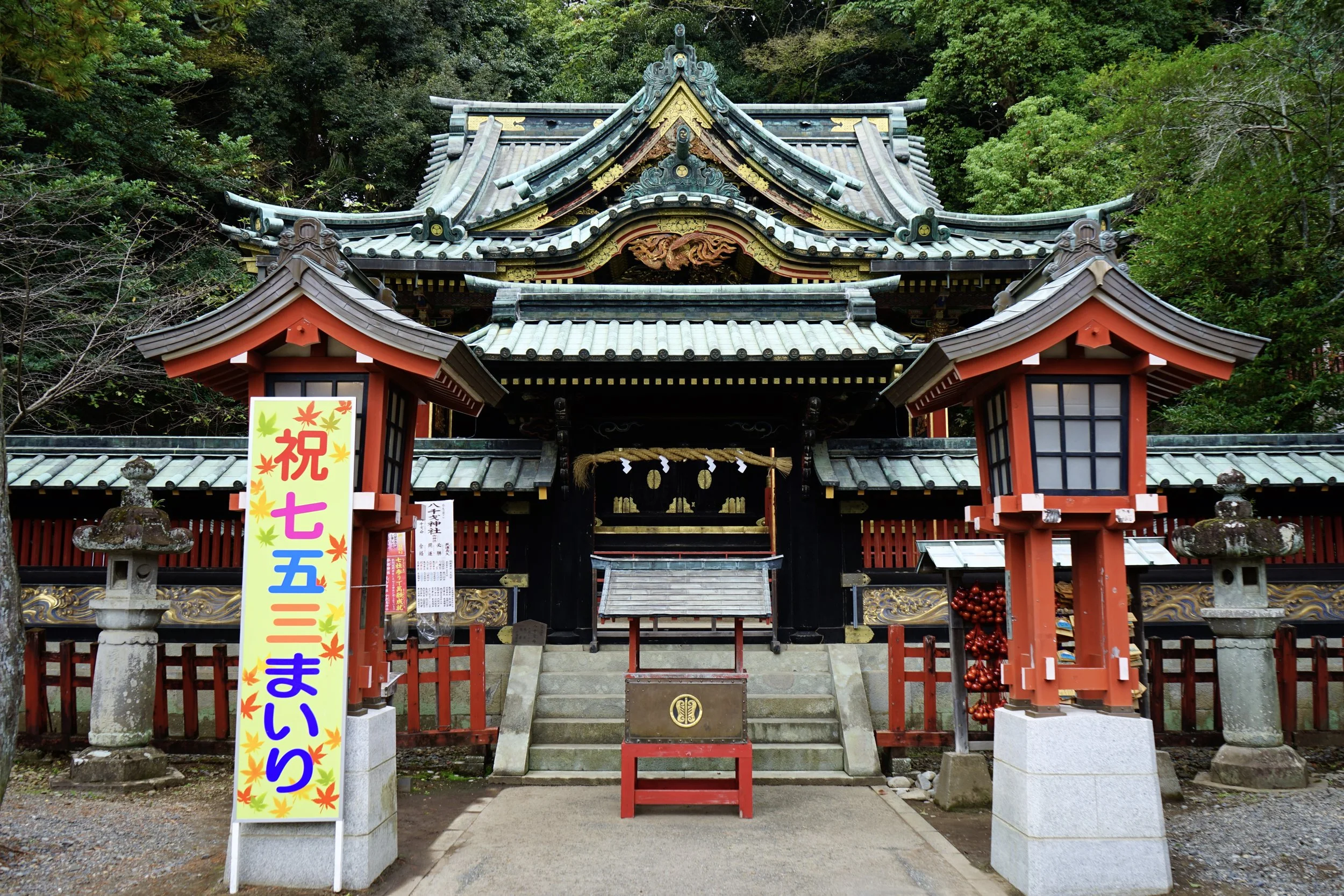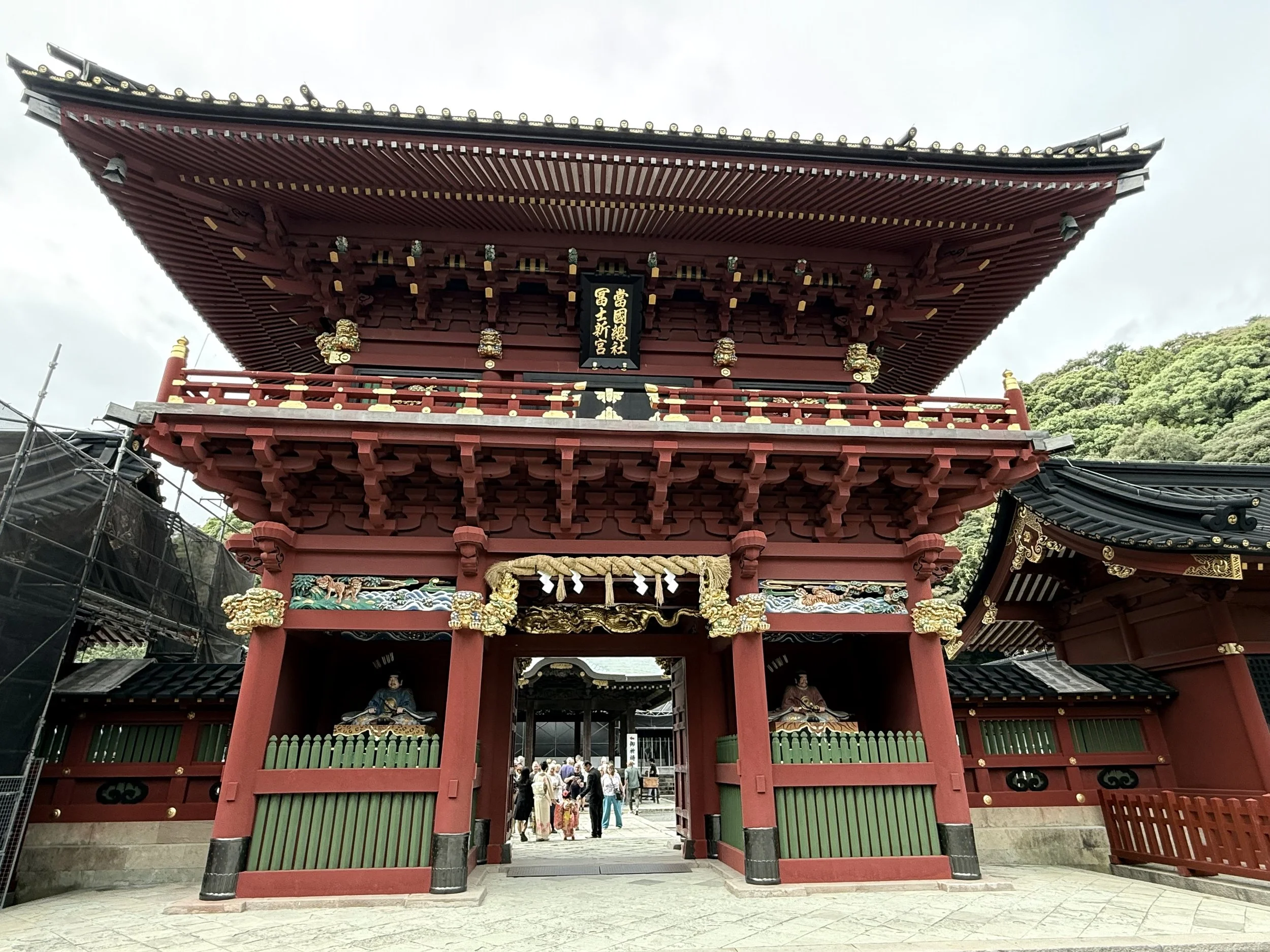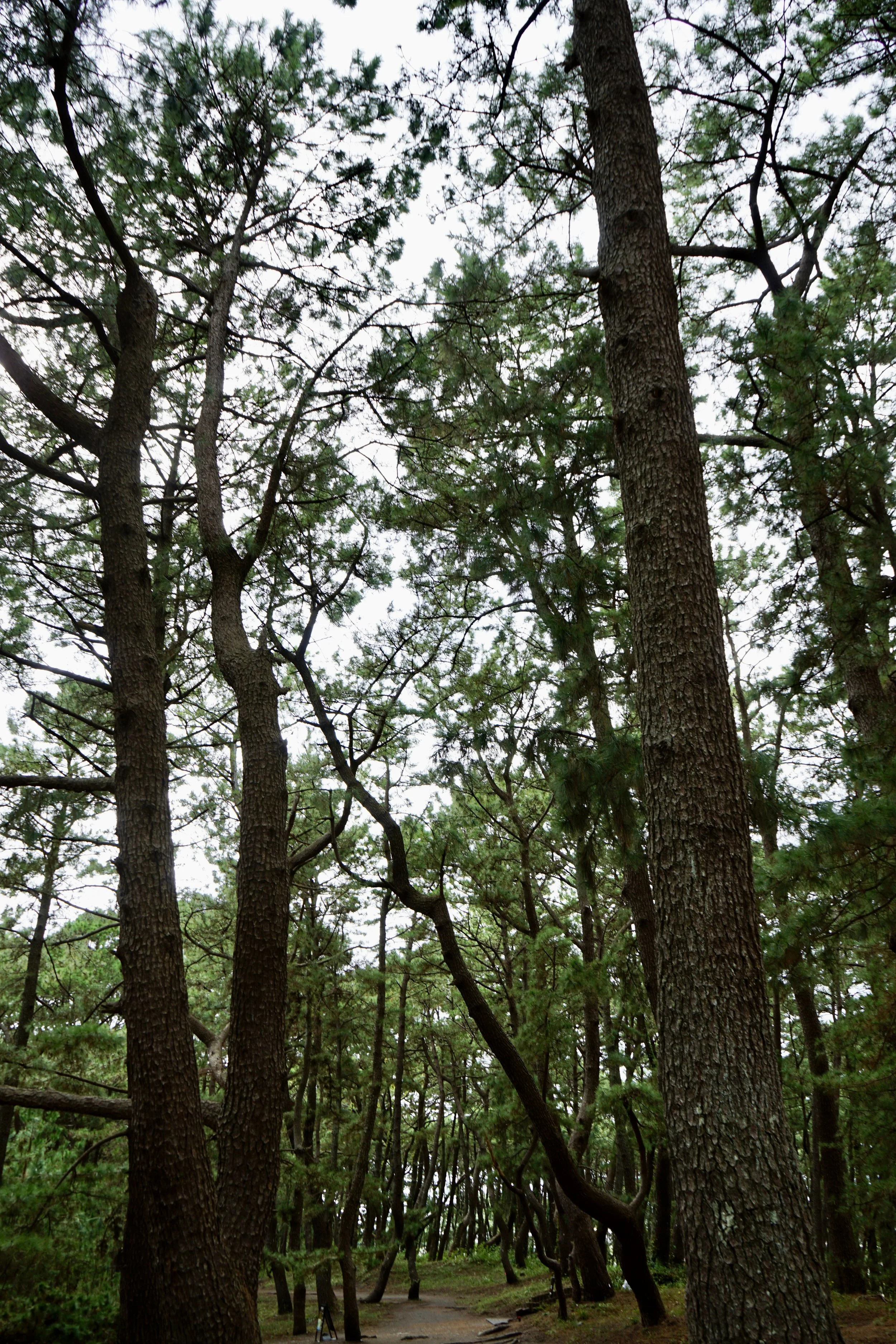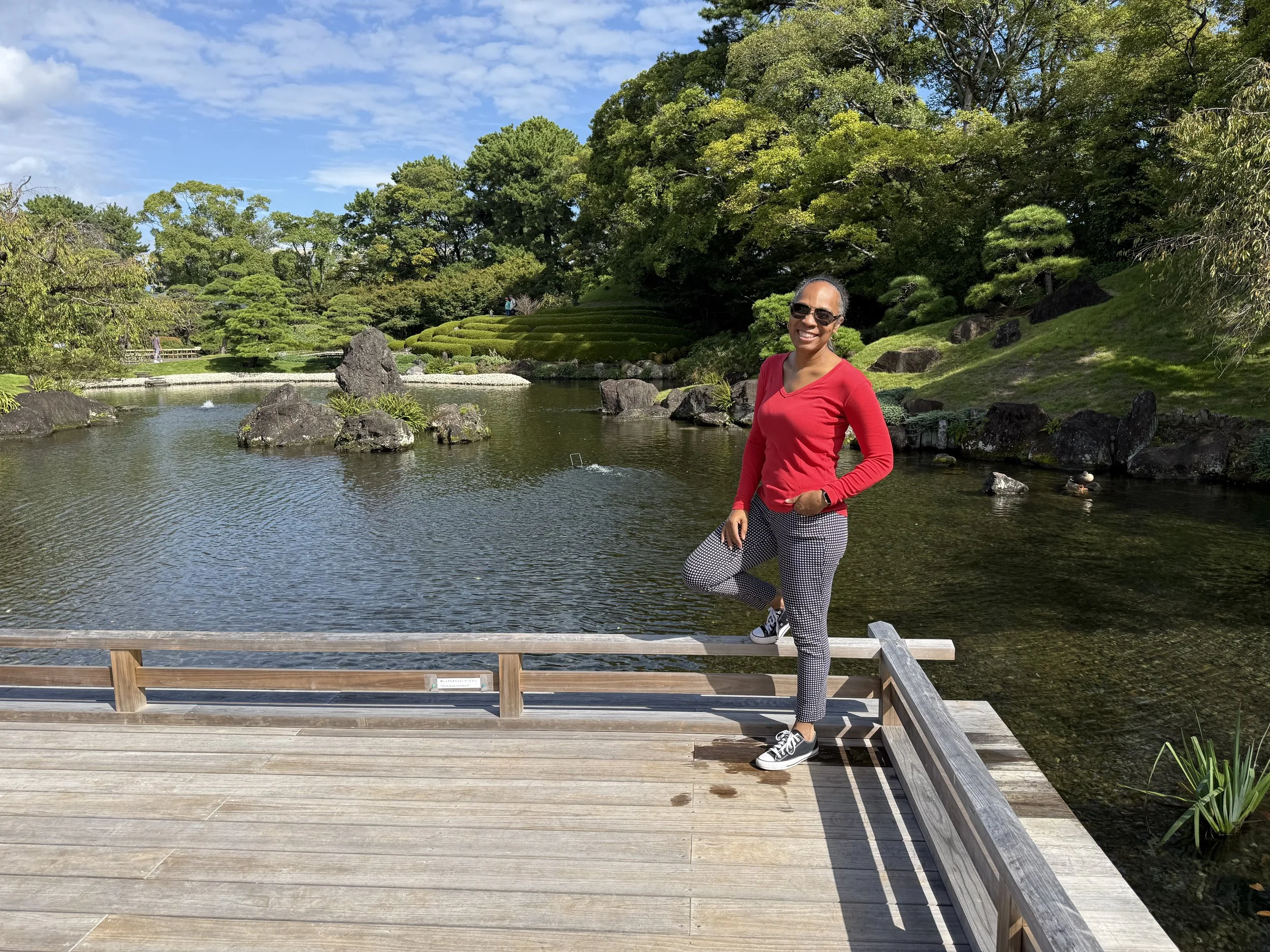Shimizu, Japan
We arrived in port midmorning and the weather looked promising. The sky was blue with clouds in the distance. I joined my tour group and headed down to the bus. Our guide was a perky Japanese woman nicknamed Eight. She told us she loved to travel and had spent her twenties backpacking around the world. During the summer she works at the Fifth Station of Mount Fuji. I didn’t know Mount Fuji had stations before that moment. It was explained there are ten in total, starting from the base and ending at the summit, with the fifth being the most accessible by road. It has shops, rest areas, and views of the surrounding landscape when the weather is clear.
Sunpu Castle Park
Our first stop was Sunpu Castle Park, once the retirement home of shogun Tokugawa Ieyasu. The original castle burned down centuries ago, but the gates, walls, and a few towers have been carefully reconstructed. The park is calm and easy to walk through, with koi ponds, pine trees, and paths lined with flowers. Entry is free, and the visit was pleasant. Outside the park, there was a statue of a wasabi plant, which I found oddly interesting.
Kunōzan Tōshōgū Shrine
The next stop was Kunōzan Tōshōgū Shrine, a richly decorated complex dedicated to Tokugawa Ieyasu. The buildings are covered in red lacquer, gold leaf, and carvings of flowers and mythical creatures. As we pulled up, a woman dressed in a peach kimono was carrying her baby, who was dressed in all white, with her two small children walking beside her in toddler-sized kimonos. Around the grounds we saw more families doing the same. Mothers wore elegant kimonos, and each child’s outfit was unique, with vivid patterns, bright colors, and embroidered details that stood out against the shrine’s red buildings. Little boys ran around in traditional attire but still behaved exactly as five year olds do.
Our guide explained that they were celebrating Shichi Go San, a traditional ceremony held for children aged three, five, and seven to pray for good health and growth. She also showed us the proper way to make an offering using a five yen coin, followed by two bows, two claps, and one final bow. The scene felt joyful and hopeful. By then, clouds had rolled in and it looked like it might rain.
Miho no Matsubara
The final stop was Miho no Matsubara, a long stretch of beach lined with pine trees. It is one of Japan’s most famous views of Mount Fuji, though the mountain stayed hidden that day. They say the sand here is black, but it looked more gray to me under the overcast sky. We walked down toward the water hoping for a break in the clouds, but there was no sign of the mountain. I headed back toward the gift shop slightly disappointed but still glad I came. The sea breeze and the statue of the celestial maiden Hagoromo near the entrance gave the place its own charm.
The pine grove behind the beach is what really stood out. It stretches for about seven kilometers and holds tens of thousands of black pines, some hundreds of years old. The oldest and most famous of them is the Hagoromo no Matsu, said to be the spot where a celestial maiden once hung her robe before returning to the heavens. Walking through the grove feels like stepping into a story. The trunks are twisted and weathered, and the ground is soft with fallen pine needles. A long wooden walkway runs along the back, built to protect the forest floor and let visitors move easily among the trees. The space feels layered and lived in, part shrine, part forest, part coastline, and even without Mount Fuji in sight, it is a memorable stop.
After that, we headed back to the port. On the ride back, Eight showed us photos she and her husband had taken of Mount Fuji from different angles throughout the seasons. I am guessing this was her way of consoling us for not getting to see the mountain firsthand.
Getting Around
Most cruise excursions to these sites are done by guided bus tour from Shimizu Port. Independent travelers can reach Sunpu Castle Park from JR Shizuoka Station on foot, about ten minutes. Kunōzan Tōshōgū Shrine and Miho no Matsubara are both accessible by local buses or taxis from central Shizuoka. Miho no Matsubara is about forty minutes by bus from Shimizu Station.
Other Things to Do in Shimizu
Shimizu is part of Shizuoka City, and there is plenty to do beyond the port. The Shimizu Fish Market Kashi-no-Ichi offers fresh seafood, including local specialties like sakura shrimp and tuna auctions in the morning. S-Pulse Dream Plaza near the harbor combines shopping, dining, and a small Mount Fuji museum. For art lovers, the Shizuoka Prefectural Museum of Art features both Japanese and Western works, including pieces by Rodin.
Travelers staying longer can also explore the tea fields that stretch through the surrounding hills. Shizuoka is known for its green tea, and some farms offer tastings and tours. For wide views of the city, head to the Nihondaira Plateau, where you can see Suruga Bay and, on a clear day, Mount Fuji rising above it.





